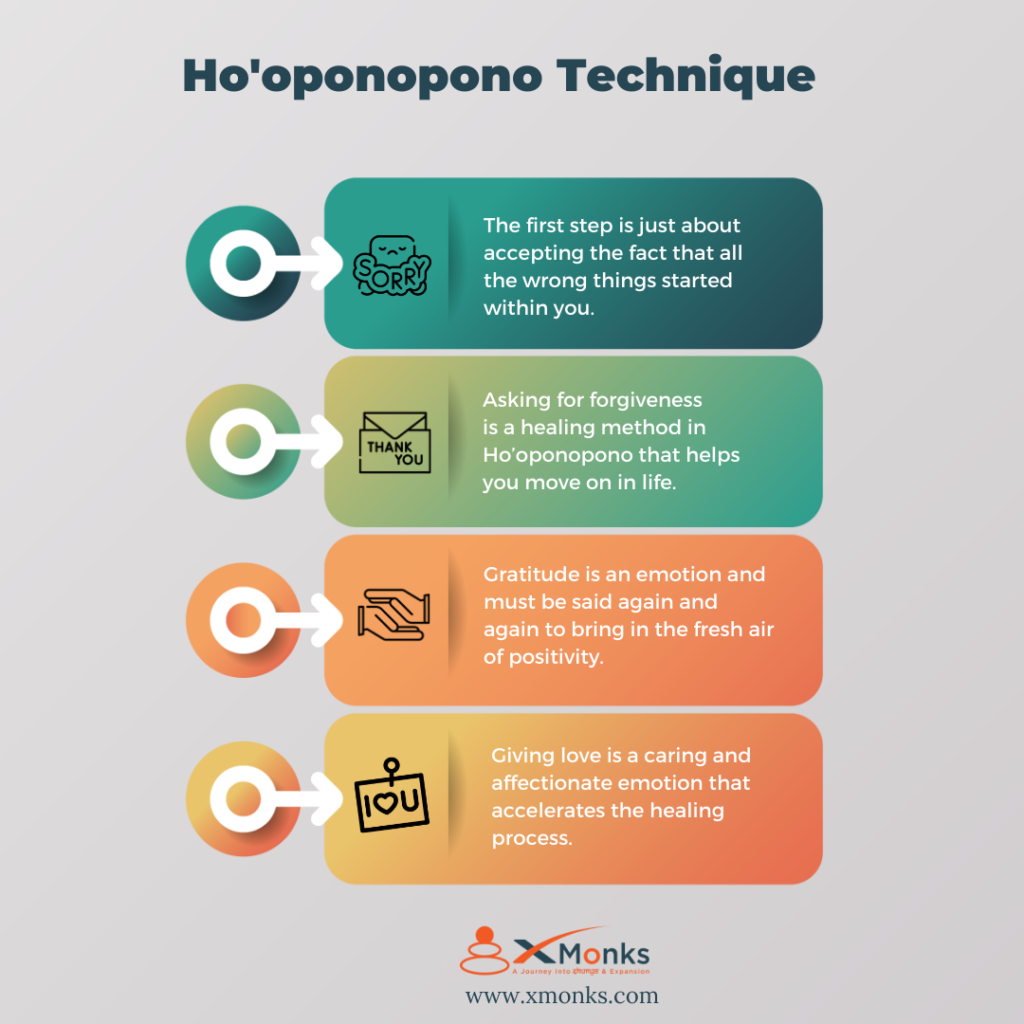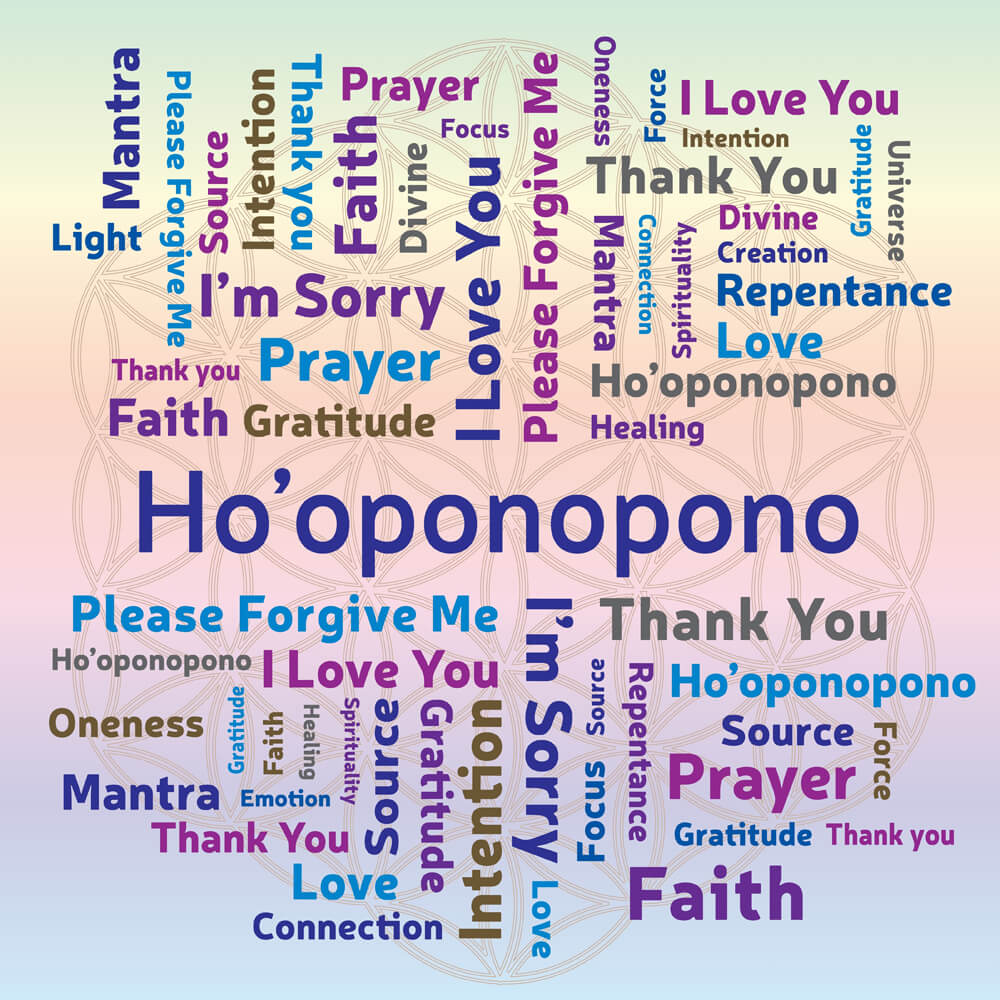Hey, have you ever wondered if there’s a way to bring healing and harmony to the corporate world? Well, there just might be! Have you heard of Ho’oponopono? It’s an ancient Hawaiian practice that has gained popularity for its potential to bring about forgiveness, healing, and reconciliation. And guess what? It’s being applied in the corporate world too!
Now, you might be thinking, how can a spiritual practice like Ho’oponopono have any relevance in the corporate setting? Well, let me tell you, it’s actually quite fascinating. Ho’oponopono teaches us that everything we experience in our outer world is a reflection of our inner world. So, if there’s conflict, stress, and disharmony in the workplace, it’s a sign that there’s something within us that needs healing. By taking responsibility for our thoughts and actions, and by practicing forgiveness and letting go, we can bring about positive change in the corporate environment.
In this article, we’ll delve deeper into the application of Ho’oponopono in the corporate world. You’ll discover how this ancient practice can help to improve communication, foster teamwork, and create a more harmonious and productive work environment. So, grab a cup of coffee and get ready to dive into the world of Ho’oponopono and its potential to heal the corporate world.

What is Ho’oponopono?
Ho’oponopono is a traditional Hawaiian practice that focuses on forgiveness, reconciliation, and healing. It is rooted in the belief that we are all connected and that every individual has a responsibility to maintain a harmonious balance within themselves and with others. The word “Ho’oponopono” itself means “to make things right” or “to rectify an error” in the Hawaiian language.
Origin and Meaning of Ho’oponopono
Ho’oponopono has its roots in the ancient Hawaiian culture and has been passed down through generations as a means to resolve conflicts within families, communities, and even within oneself. It was originally performed by a designated elder or spiritual leader, known as a “kahuna,” who facilitated the process.
The practice of Ho’oponopono is based on the understanding that all problems and conflicts arise from errors or imbalances in relationships. It recognizes the interconnectedness of all beings and acknowledges that the healing of one individual contributes to the healing of the whole.
Principles and Philosophy of Ho’oponopono
At the core of Ho’oponopono are four essential principles:
-
I’m Sorry (ʻO wau iʻe): Taking responsibility for any actions or thoughts that have contributed to the problem or conflict.
-
Please Forgive Me (E kala mai): Asking for forgiveness for any harm caused, whether intentional or unintentional.
-
Thank You (Mahalo): Gratitude for the opportunity to learn and grow from the experience.
-
I Love You (Aloha): An expression of love and compassion towards oneself and others, recognizing that everyone is deserving of forgiveness, understanding, and respect.
These principles embody the essence of Ho’oponopono and guide individuals towards healing, reconciliation, and positive transformation.
Ho’oponopono in the Corporate World
The Need for Healing in the Corporate World
In today’s fast-paced and competitive corporate environment, stress, conflicts, and strained relationships often take a toll on both individuals and organizations as a whole. Employees may experience high levels of job-related stress, which can lead to burnout, decreased productivity, and increased turnover rates.
Team dynamics and interdepartmental conflicts can create a toxic work environment, hindering collaboration, creativity, and effective decision-making. Addressing these issues becomes crucial for maintaining a healthy and productive corporate culture.
Challenges Faced by Companies
Companies often struggle with addressing internal conflicts and creating a harmonious work environment. Hierarchical structures, power struggles, and lack of effective communication channels can exacerbate the tensions and hinder progress.
Additionally, cultural diversity within organizations can introduce new challenges, with miscommunication and misunderstandings arising from different perspectives, values, and communication styles.
Benefits of Ho’oponopono for Corporations
Implementing Ho’oponopono principles and practices in the corporate world can bring about numerous benefits:
-
Improved Workplace Relationships: Ho’oponopono helps to heal conflicts, improve communication, and build trust among team members. As individuals take responsibility for their actions and seek forgiveness, a shift occurs from blame and resentment to understanding and empathy.
-
Enhanced Employee Well-being: The practice of Ho’oponopono encourages self-reflection and the release of negative emotions. This can lead to reduced stress levels, increased emotional resilience, and improved overall well-being for employees.
-
Increased Productivity and Innovation: By promoting forgiveness, unity, and collaboration, Ho’oponopono creates a supportive and positive work environment. This fosters creativity, encourages open dialogue, and enhances problem-solving capabilities, ultimately leading to increased productivity and innovation.
-
Higher Employee Retention: When companies prioritize healing and reconciliation, employees feel valued, respected, and connected. This fosters a sense of loyalty and commitment, leading to higher employee retention rates and lower turnover.

Implementing Ho’oponopono in the Workplace
Introducing Ho’oponopono to Employees
To successfully implement Ho’oponopono in the workplace, it is essential to introduce the concept and its principles to all employees. This can be done through workshops, training programs, or internal communication channels.
By explaining the philosophy behind Ho’oponopono and its potential benefits, employees can understand the value of the practice and how it can positively impact their personal and professional lives.
Creating a Culture of Forgiveness and Unity
Creating a culture of forgiveness and unity requires a holistic approach that involves leaders, managers, and employees at all levels. It starts with leading by example, openly acknowledging mistakes, and demonstrating a commitment to personal growth and development.
Organizations can encourage open dialogue, active listening, and empathy-building exercises to foster understanding and unity among team members. Regular team-building activities and social events can also strengthen relationships and promote a sense of belonging.
Training Programs and Workshops
To ensure the successful integration of Ho’oponopono principles into the corporate culture, companies can offer training programs and workshops that provide employees with practical tools and techniques to apply in their daily work lives.
These programs can include mindfulness exercises, conflict resolution strategies, and communication skills training. By equipping employees with these tools, companies empower them to address conflicts constructively and promote healing within their teams.
Applying Ho’oponopono to Corporate Relationships
Healing Conflict and Improving Communication
Ho’oponopono offers a unique approach to healing conflicts within corporate relationships. By encouraging individuals to take responsibility for their actions and seek forgiveness, it creates an environment that fosters empathy, understanding, and effective communication.
Managers can facilitate healing processes by organizing mediation sessions, providing a safe space for employees to express their concerns, and promoting open dialogue between conflicting parties. Regular check-ins and feedback sessions can also help address any emerging conflicts before they escalate.
Building Trust and Collaboration
Trust is the foundation of successful corporate relationships. Ho’oponopono principles, when applied consistently, promote trust-building among team members by emphasizing personal responsibility, forgiveness, and unity.
Organizations can foster trust by encouraging transparency, promoting fairness, and recognizing and appreciating individual contributions. By creating opportunities for collaboration and cross-functional projects, companies can strengthen relationships and improve overall teamwork.

Ho’oponopono Techniques for Business Success
Self-Identity and Responsibility
The practice of Ho’oponopono emphasizes personal responsibility and self-reflection. Individuals are encouraged to examine their own thoughts, beliefs, and actions and take ownership of their contribution to conflicts or challenges.
By cultivating self-awareness and recognizing their role in any given situation, employees can proactively seek solutions and take steps towards personal and professional growth.
Clearing Limiting Beliefs and Blocks
Ho’oponopono recognizes that individuals may hold onto limiting beliefs that hinder their personal and professional growth. These beliefs can create mental and emotional blocks, impacting performance and decision-making.
Techniques such as affirmations and visualizations can be incorporated into daily routines to clear these limiting beliefs and replace them with positive and empowering thoughts. This practice enables individuals to overcome challenges, tap into their full potential, and achieve business success.
Visualizations and Affirmations
Visualizations and affirmations are powerful tools that can be used to reinforce positive thinking and manifest desirable outcomes. By visualizing success, harmony, and productivity, individuals can align their thoughts and intentions with their desired goals.
Affirmations, such as “I am open to forgiveness and understanding,” or “I am a valuable contributor to my team,” can be repeated daily to reaffirm positive beliefs and encourage a mindset of growth and collaboration.
Measuring the Impact of Ho’oponopono in Corporations
Key Performance Indicators
While it can be challenging to measure the direct impact of Ho’oponopono on corporate success, there are key performance indicators that can provide insights into its effectiveness. These may include metrics such as employee satisfaction, retention rates, productivity levels, and overall team cohesion.
Companies can track these metrics over time to gauge the progress and impact of implementing Ho’oponopono principles within the organization.
Qualitative Assessments
In addition to quantitative measures, conducting qualitative assessments, such as surveys or focus groups, can provide valuable feedback on the perceived impact of Ho’oponopono practices. These assessments can capture individual experiences, attitudes, and perceptions towards the implementation of the practice within the corporate environment.
Such assessments can help identify areas of improvement, challenges, and success stories, providing valuable guidance for sustained implementation.
Success Stories
Sharing success stories that highlight the positive outcomes derived from implementing Ho’oponopono can serve as powerful testimonials for its effectiveness and encourage further participation and adoption. These stories can be shared through internal communication platforms, newsletters, or during company-wide meetings.
By showcasing real-life examples of how Ho’oponopono has positively impacted individuals and teams, organizations can inspire others to embrace the practice and experience its benefits firsthand.

Challenges and Solutions in Implementing Ho’oponopono
Resistance to Change
Implementing Ho’oponopono in the corporate world may face resistance due to skepticism, unfamiliarity, or a general aversion to change. Some employees may question the relevance or efficacy of the practice, requiring careful communication and education.
To address resistance, organizations can emphasize the potential benefits, share success stories, and provide training and support for employees to understand and integrate Ho’oponopono into their daily work lives.
Cultural Adaptation
As Ho’oponopono is rooted in Hawaiian culture, introducing it into corporate environments across the world requires cultural adaptation. Respect for diverse cultural backgrounds and beliefs is essential to ensure that the practice is inclusive, respectful, and meaningful for all employees.
Organizations can engage cultural consultants or experts to help contextualize the practice within a specific corporate culture and provide guidance on its implementation and respectful application.
Sustaining Ho’oponopono Practices
Sustaining the practice of Ho’oponopono within an organization requires long-term commitment, continuous reinforcement, and ongoing support. It is important to integrate the principles and techniques into daily operations, rather than treating them as a one-time intervention.
Organizations can establish feedback mechanisms, provide ongoing training and resources, and foster communities of practice to ensure that Ho’oponopono becomes an integral part of the corporate culture.
Case Studies: Ho’oponopono in Corporate Environments
Company A: Overcoming Internal Conflicts
Company A, a multinational corporation, was facing severe internal conflicts within its management team. The conflicts had resulted in a decrease in productivity, increased turnover, and a toxic work environment.
Recognizing the need for healing and reconciliation, the company introduced Ho’oponopono principles and practices to its management team. Training programs were conducted, and regular mediation sessions were organized to facilitate open dialogue and forgiveness.
Over time, the culture at Company A began to change. Relationships improved, conflicts were resolved, and trust was rebuilt. The positive impact of Ho’oponopono was reflected in increased collaboration, improved decision-making, and a significant decrease in turnover rates.
Company B: Improving Employee Morale and Productivity
Company B, a mid-sized tech company, was struggling with low employee morale, high turnover rates, and declining productivity. The competitive nature of the industry had created a tense work environment, leading to conflicts and strained relationships among team members.
In an effort to foster a more positive and harmonious work culture, Company B implemented Ho’oponopono workshops, team-building activities, and regular check-ins to address conflicts and promote forgiveness.
As employees embraced the practice, there was a noticeable shift in attitudes and behaviors. Communication improved, collaboration increased, and overall employee well-being and happiness rose significantly. The positive transformation translated into enhanced productivity, higher retention rates, and a more positive company culture.

Ethical Considerations of Ho’oponopono in Business
Respecting Cultural Appropriation
Ho’oponopono originates from Hawaiian culture and holds deep spiritual significance for the people of Hawaii. When incorporating Ho’oponopono into corporate environments, it is important to respect and honor its cultural roots, as well as obtain appropriate permissions and guidance from cultural experts.
Organizations should ensure that Ho’oponopono is not treated as a mere trend or marketing ploy, but rather as a practice that is approached with respect and integrity.
Maintaining Authenticity and Integrity
Maintaining the authenticity and integrity of the practice is crucial. It is essential to avoid diluting or distorting the principles, philosophy, or techniques of Ho’oponopono to fit corporate agendas or commercial interests.
Organizations should prioritize the well-being and growth of individuals and the collective rather than solely focusing on business outcomes. Being transparent and genuine in the implementation and integration of Ho’oponopono will help foster trust and demonstrate a commitment to ethical practices.
Benefits Beyond the Bottom Line
Enhancing Employee Well-being and Happiness
The application of Ho’oponopono principles in the corporate world extends beyond improving business outcomes. By emphasizing forgiveness, unity, and personal responsibility, companies can contribute to the overall well-being and happiness of their employees.
Reduced stress levels, improved work-life balance, and a positive work environment all contribute to higher levels of employee satisfaction and well-being.
Creating Positive Social Impact
By prioritizing healing, reconciliation, and positive relationships, companies that embrace Ho’oponopono contribute to the creation of a more harmonious and compassionate society. Through fostering empathy, understanding, and unity, organizations have the potential to inspire positive change within their communities.
The impact extends beyond the workplace, ultimately contributing to a healthier and more harmonious world.
Future Trends and Possibilities
Ho’oponopono in Virtual Workspaces
With the rise of remote work and virtual teams, incorporating Ho’oponopono principles into virtual workspaces becomes increasingly important. Virtual team-building activities, regular virtual check-ins, and the use of technology to facilitate healing processes can help recreate the sense of unity and collaboration traditionally associated with Ho’oponopono.
Integration of Technology and Healing Practices
Advancements in technology offer new possibilities for integrating Ho’oponopono practices into the corporate world. Digital platforms can be utilized to provide resources, share success stories, and facilitate virtual training programs and workshops.
Additionally, data analytics can be leveraged to measure the impact of Ho’oponopono on key performance indicators and guide ongoing improvements and adaptations.
Conclusion
Ho’oponopono offers a transformative approach to healing in the corporate world. By prioritizing forgiveness, unity, and personal responsibility, organizations can create a harmonious work environment that enhances employee well-being, improves relationships, and fosters collaboration.
Implementing Ho’oponopono requires a commitment to cultural respect, ongoing support, and a genuine intention to create positive change. As more companies embrace this practice, the corporate world has the potential to become a place of healing, growth, and sustainable success.